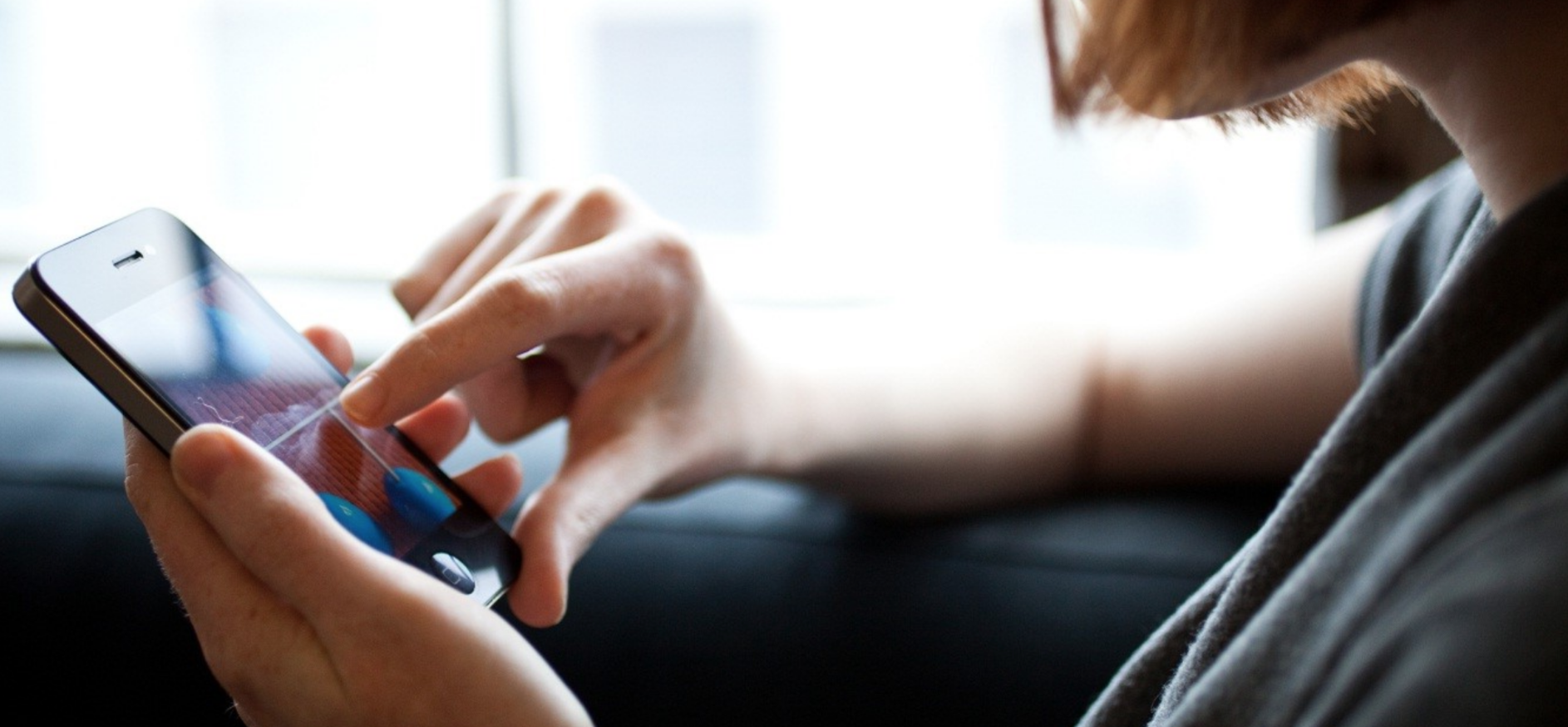According to the World Health Organization (WHO), the array of mental disorders include depression, bipolar affective disorder, schizophrenia and other psychoses, dementia, intellectual disabilities and developmental disorders including autism.
These conditions manifest in different ways such as abnormal thoughts, perceptions, emotions, behavior, and relationships with others. Depression alone affects more than 300 million people according to the WHO. Scientific American reports that the economic cost of depression in the US is in the hundreds of billions annually.
Even with access to capable health care and social services, those afflicted with mental health conditions hesitate to avail of the treatment due to the stigma surrounding the illness.
In response, technology companies have developed artificial intelligence applications for mobile phones that aim to be the first line of support for mental health patients, yet provide privacy and anonymity. These applications, targeted at individuals, were developed to proactively check on patients, be ready to listen and chat anytime, anywhere, and recommend activities that improve the users’ wellbeing.
Below are five AI applications targeted at alleviating mental health disorders. While these do not represent the field in its entirety, these were chosen for their factors such as funding, user base or ubiquity and industry recognition.
(Readers with a broader interest in chatbots might be interested in our comparison of healthcare chatbots, and our article about current chatbot use-cases.)

Woebot
Total funds raised: $8,000,000
Year founded: 2017
HQ location: San Francisco, California, USA
Number of employees: 11-15
Target user: Patient, Clinician
Type(s) of data processed: Text (Chat interface)
Estimated number of current users: 1,000 downloads from Google Play Store
Woebot claims to be an automated conversational agent or chatbot that monitors the moods of users and provides a venue in which users can express their thoughts and emotions through therapeutic conversations.
Originally built for young adults and graduate school students, Woebot is built on a platform of Cognitive Behavioral Therapy (CBT) – a process that the UK National Health Service describes as a talking therapy that can help patients manage mental health condition by changing the way they think and behave by enalbing patients to reframe their negative thoughts into positive ones – natural language processing, clinical expertise, and light-hearted daily talk intended to create a therapeutic experience for the user.
The app asks users how they’re feeling and what is going on in their lives, talks to them about mental health and wellness, and sends videos and other useful tools depending on the user’s current mood and needs.
In a recent study conducted by Stanford University over a two-week period, 70 students aged 18-28 who had up to 20 sessions with Woebot reported significant decreases in their feelings of anxiety and depression, compared to an information-only control group. Among the non-control group, as much as 85% of participants used Woebot on a daily or almost daily basis. It is unclear what the longer term impacts of app use are for well-being, and it’s clear that much more formal research will have to be conducted in the years ahead.
There is little by way of formal studies of mental health apps. although a few mental health sites and organizations periodically review apps, such as Healthline and the American Depression and Anxiety Association. (Readers with a more direct interest in depression might be interested in our article titled Diagnosing and Treating Depression with AI and Machine Learning.)
Woebot’s clinical team is led by founder and CEO psychologist and healthcare designer Dr. Alison Darcy, PhD, who has with over 15 years experience in health tech, supported by Chief Clinical Officer Athena Robinson, PhD, and Laurel Hart a specialist in natural language processing (NLP). Meanwhile, the technical aspect is overseen by Joseph Doyle, Head of Engineering, and Colin Parsons, Lead Mobile Engineer.
Together, this team developed Woebot on the Facebook Messenger platform, where the app initiates conversations in English and creates a weekly graph to monitor any changes in the user’s mood. The company cliams that the more frequent and regular the chats become, the better Woebot is able to gather data about the user and provide a first-defense line of mental health support.
At the moment, the Woebet site claims that it works solely on the funding it has received. According to its website, along the course of its development, the company may start charging a cost to download to make the business more sustainable. However, this video of a news report says Woebot is free only in the first two weeks, then costs $39 exceeding that period.
Moodkit and Moodnotes
Total funds raised: No data available
Year founded: 2010
HQ location: Los Angeles, California
Number of employees: 2-10
Target user: Patient
Type(s) of data processed: Chat, video, text and voice journal
Estimated number of current users: No data available
Moodkit
Moodkit, developed by mobile application development company Thriveport, is a system of applications that helps users alleviate symptoms of mental illness. This is done through guided activities that identify and change negative thought patterns, tools that rate and chart moods across time, and text journaling using custom templates.
Initially proposed by digital product and service company ustwo, Thriveport’s lead clinical psychologists Drs. Edrick Dorian and Drew Erhardt accepted the collaboration to build Moodkit.
Voted by Healthline as among the Best Apps for Depression in 2017, Moodkit claims to draw on the principles and techniques of CBT, and features an activities tool that suggests specific steps users can take to improve their mood, The Thought Checker feature helps manage negative feelings related to a specific situation, resulting in a change in mindset through repeated use.
The company claims that the Mood Tracker allows users to make, save, and chart daily ratings of the user’s mood and is integrated with the Journal tool to record and save text and voice notes that can be attached to mood ratings. Mood rating charts display the last 7 days or 30 days.
For a $5 fee, users can download the app on their iPhone, iPad and iPod touch. The Apple Store does not show the number of downloads – nor rating by users who downloaded it. Thriveport’s partner ustwo generates the revenues by partnering with businesses and organizations to form new ventures and invest in early-stage startups.
Moodnotes
Moodnotes, also by Thriveport, is another result of a collaboration between the company’s clinical psychologist founders Drs. Edrick Dorian and Drew Erhardt, and ustwo, a digital products studio.
Recognized as a finalist in the app category of the 2016 Innovation by Design Awards, Moodnotes also claims to use CBT principles in guiding users in complete journaling activities. It works with users inputting their mood for the day, rating their mood, and providing a short description or some context about their emotion. They can add more detail by choosing from a large menu of emotion keywords provided by the app.
Once the app recognizes the user’s mood as negative, it asks insightful questions to determine the user’s thought patterns such as generalizing, emotional reasoning, or perhaps needless worrying. The questions are designed to help the users reflect on their emotions and strengths, then steer them toward more positive thought patterns. The app responds with some gentle encouragement to help the user develop healthier mental perspectives, decrease anxiety, and improve well-being.
Downloading Moodnotes from the Apple Store requires a one-time fee of $3.99. It comes in English and Spanish versions. To appreciate Moodnotes better, watch this 3:06-minute video on how the app was developed:
The Apple Store does not show the number of downloads, but the product received an average rating of 4.7 (out of 5) from 2,400 users.
Pacifica
Total funds raised: $53,800
Year founded: 2014
HQ location: San Francisco, California
Number of employees: 5
Target user: Patient, Clinician, Educator
Type(s) of data processed: audio, video
Estimated number of current users: 500,000+ downloads from Google Play Store; App Store – no data available
The Pacifica app, as claimed by creator Pacifica Labs, Inc, is an app that can help address anxiety issuess based on Cognitive Behavioral Therapy-based principles. Tools and activities include meditation, relaxation, mood and health tracking tools.
The mediation tool includes more than 30 audio exercises involving deep breathing and muscle relaxation. The audio and text journals claim to helps users understand and challenge their thinking patterns to and guide them toward more positive perspectives. The health tracker monitors habits that trigger anxiety such as exercise, sleep, caffeine, alcohol, etc., and, based on these, helps users to set goals that will improve their mood.
Pacifica also gives the user access to its community of peers where they can share stories, tips and support. The app can be downloaded on both Apple and Android devices for a monthly ($8.99), yearly ($53.99) or lifetime ($199.99) fee.
The advisory board of clinical experts consists of licensed psychiatric, psychology and behavioral Ph.D. holders. Technical expertise is from Founder and CEO Dale Beermann, who has a Master’s degree in Computer Science, while design expertise is by co-founder Chris Goettel.
Wysa
Total funds raised: $1,300,000
Year founded: 2015
HQ location: Bangalore
Number of employees: 2-10
Target user: Patient, Clinician
Type(s) of data processed: Chat
Estimated number of current users: 100,000+ downloads from Google Play Store, no data available from App Store
Developed in collaboration with researchers from Columbia and Cambridge universities, Wysa is an AI-based ‘emotionally intelligent’ bot that claims to help users manage their emotions and thoughts through an array of tools and techniques such as evidence-based CBT, Dialectical Behavior Therapy (DBT), as well as guided meditation, breathing, and yoga.
Developed by the company Touchkin using Facebook Messenger as the user interface, compatible with both IOS and Android products. Any user who feels they need the human connection and more specific kind of treatment can subscribe for a $29.99 monthly fee to chat with a Wysa human “coach”, who will support and encourage users to achieve defined mental health goals. However, the user or patient needs to be 18 years old and authorized to sign an agreement with Wysa to be connected with a Wysa coach. it is not clear on the company web site how the company verifies the user’s age or whether these coaches are licensed mental health professionals.
Leading the Wysa advisory board is Dr. Becky Inkster, a neuroscientist at Cambridge Univversity. On the Wysa team itself are social work experts and researchers, and mental and health advacates, medical specialists, entrepreneurs and engineers.
Currently, the company website reports that Wysa is used in 30 countries with the top users being the US, the UK and India.
Joy App
Funding: Unspecified
Year founded: 2016
HQ location: Unspecified
Number of employees: Unspecified
Target user: Patient
Type(s) of data processed: Chat
Number of users: No data available
Joy, founded by product designer Danny Freed as a tribute to a close friend who suffered from depression, is built to collect and measure the user’s physical activity, location and movement patterns, social interactions, mood, energy, and more. These measurements will then be analyzed by the app to show patterns and habits that may be affecting the user’s moods and mindset.
Joy is built on two platforms – Facebook Messenger and Slack – to be more accessible to more users who are already using these free applications. Similar to other mental health apps, Joy checks in with the user once a day to ask how they are doing and their activities for the day. From keywords in the conversation, Joy will interpret the user’s mood and offer some tips to boost positive emotions.
Joy also claims to recognize the user’s mood patterns over time and generates a weekly report as a way to monitor the user’s well-being. This is little evidence that there was any collaboration with mental health professionals in the approval or design, as the company’s website and LinkedIn page provide little context as to the development of the app.
The app was launched in 2016 but little is known about it today. To sign up, a user inputs his or her email address on Joy’s homepage and receives an automated note from Freed saying that the user is on a waitlist. There is so little information regarding any of its other or new features aside from what was written two years ago – we’re uncertain as to whether or not the app is still active. Freed (Founder and CEO) appears to have a full-time job (according to his LinkedIn profile), which bodes poorly for the company’s traction in the near term.
Concluding Thoughts
Applications that address mental health disorders are fairly new, but as the World Health Organization and the growing number of users suggest, there is a need for mental health consumer applications. With the wide use of mobile phones and internet connectivity, these anonymous and private apps have become accessible in assisting hundreds of thousands of patients.
Be that as it may, a number of key issues surround mental health chatbots. For one, the stigma of mental health disorders is difficult to dispel and continues to hound environments and cultures in which patients live. This is barring them from stepping forward to seek treatment.
Secondly, these apps are not equipped to prescribe specific medical treatment. They are only the first step or the first line of defense to alleviate some mental health symptoms. This could potentially be an important step in improving well-being, but there isn’t nearly enough data on these applications and their effects at this time.
For the apps that are available in the market, the majority of downloads are done by individuals. Many of these apps are developed within academic research settings and rarely have the needed infrastructure to support and bring them to the wider market. Further, there are no indications that the apps are being adopted by clinics, hospitals or other health and medical institutions. These institutions would be right to wait two to three more years to see how these apps further develop.
Another challenge for developers involves natural language processing for text and speech. At the moment, these apps are just now learning the nuances of the English language, and seem to largely depend on short descriptions being input by the users. The mood trackers use non-verbal communication without the context of facial expressions, body language or voice inflections, which is also likely to be a challenge in the near term.
It is unclear how accurate a mental health app can be with tracking moods or making suggestions with the relatively low level of investment in this domain (compared to other areas of healthcare, such as pharma or medical diagnostics), and the low level of resolution in understanding users. There is a potential danger of oversimplifying the condition and the recommendations, and it’s unclear exactly how this will be navigated in the years ahead.
Mental health chatbots and therapy apps are still in their very early stages, requiring extensive research and streamlining to ensure the proper treatment of patients. While these chatbots may be an additional resource for patients seeking initial help, but there is no replacement traditional therapy channels and the human connection that professional therapists and counselors provide.
Human connection and correct diagnosis are still the most important factors in treating mental health disorders – and we can expect that to remain the case for many years to come. The place where apps might play a role in the future mental health ecosystem is yet to be determined.
Header image credit: TrackingApps


















